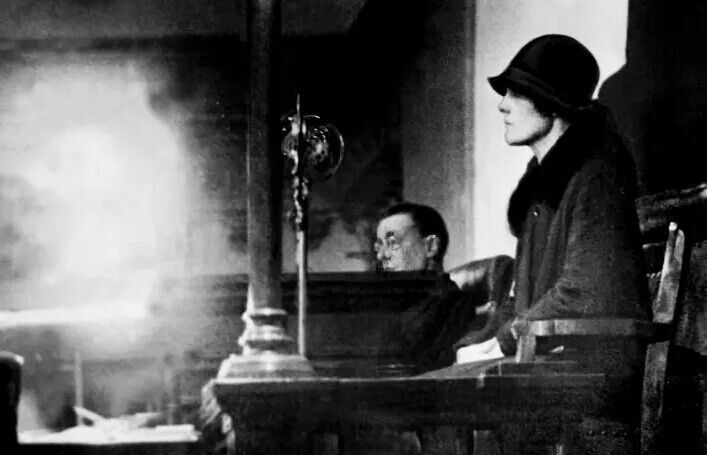
A housewife and salesman had an affair, then hatched the conspiracy to kill her husband and demanded insurance money when he died. If this sounds like a black movie plot, it is because it is; this is the plot of James Kane’s 1943 crime novel “Double Compensation” and the 1944 film adaptation. But this is also what happens in the real crimes that Double Indemnity is based on.
On March 20, 1927, Ruth Snyder claimed that two “giant Italians” broke into her house in Queens and stunned her. She said they tied her up and left her in the hallway. Then, when her 9-year-old daughter was still asleep, they killed her husband and stole her jewelry.
The police immediately suspected that Snyder did not seem to have been eliminated. They also found her “stolen” jewelry stuffed under her mattress. Within a few hours, she gave up the name of the married corset salesman who slept with Henry Judd Gray and nailed the murder to him.
When the police arrived in Gray, he confessed but accused Snyder of tempting him and planning to murder her husband, the art editor of the motorboat magazine. The police also found that just before her husband was murdered, Snyder forged a double compensation insurance policy in his name because he accidentally died nearly $100,000.
In addition to failed insurance fraud, one of the most significant aspects of crime is how Snyder and Gray can do nothing. They hit him with heavy objects in the window, killed Snyder’s husband, stuffed the chloroform-soaked cotton into his nose and strangled him with a frame. They tried to cover it up as a bad “break into”, and when the story fell, the former lovebirds immediately turned to each other.
At the time, journalist Damon Runyon called it “dumbbell murder” because it was too stupid. However, in the past year, it has received “the attention of the press, which is not commensurate with the importance of murder to society as a whole,” said Maurine Beasley, a professor of journalism at the University of Maryland. “These are not politicians, these people are not important, these are not celebrities – these are ordinary people.”
The driving force behind this report is the Daily Graphic, the daily news and the New York tabloid news battle between William Randolph Hearst’s Daily Mirror. In order to transcend each other, they have locked in stories that have little to do with the public and draw readers with sensational details. The tabloid “has not hesitated to fabricate details because it does not strictly follow the facts,” Beasley said. Prior to Snyder and Gray, the New York tabloid triggered a similar media sensation in the murder of a pastor and chorus in New Jersey in 1922.
In the report, the tabloid turned Snyder and Gray into sensational figures in Hollywood movies. This is especially true for Snyder, who became the beauty of the story. The tabloid described her as a “synthetic blonde murderer”, a “vampire’s wife” – the most unusual – “ruthless Ruth, Queen’s Village Viking Ice Girl”, Penelope Pelizzon and Nancy West in 2005 10 Written in a narrative article of the month.
Gray also often speaks to tabloids and portrays himself as a victim. Before Snyder and Gray’s trial began, he described his relationship with Snyder’s “Daily News”: “She will put her face one inch away from me, watching deeply. My eyes, until I am completely her. When she hypnotizes my thoughts with her eyes, she will pat my cheek with my palm to control my body.”
Such reports have aroused public interest in the case. “There are 1,500 people packed in court every day, and as many as 2,000 people besieged the streets,” Jessie Ramey wrote in an article in the Spring 2004 Social History Journal. The hawker sells fake tickets for $50, and souvenir vendors sell sticks with murder weapons – belt weight – ten cents.
How did the whole legend end? In James Cain’s novella, the salesman (selling insurance instead of a corset) fled to a ship in Latin America, only to find that his female accomplice was also on board. Because the criminal records in the newspapers have become “sensational”, they are afraid of being arrested, and they will all commit suicide by jumping off the building at night. In the movie version of double compensation, it was not taken out of the country. The celluloid salesman killed his girlfriend and waited for the police to take him away.
But somehow, the real ending of the story is more morbid.
